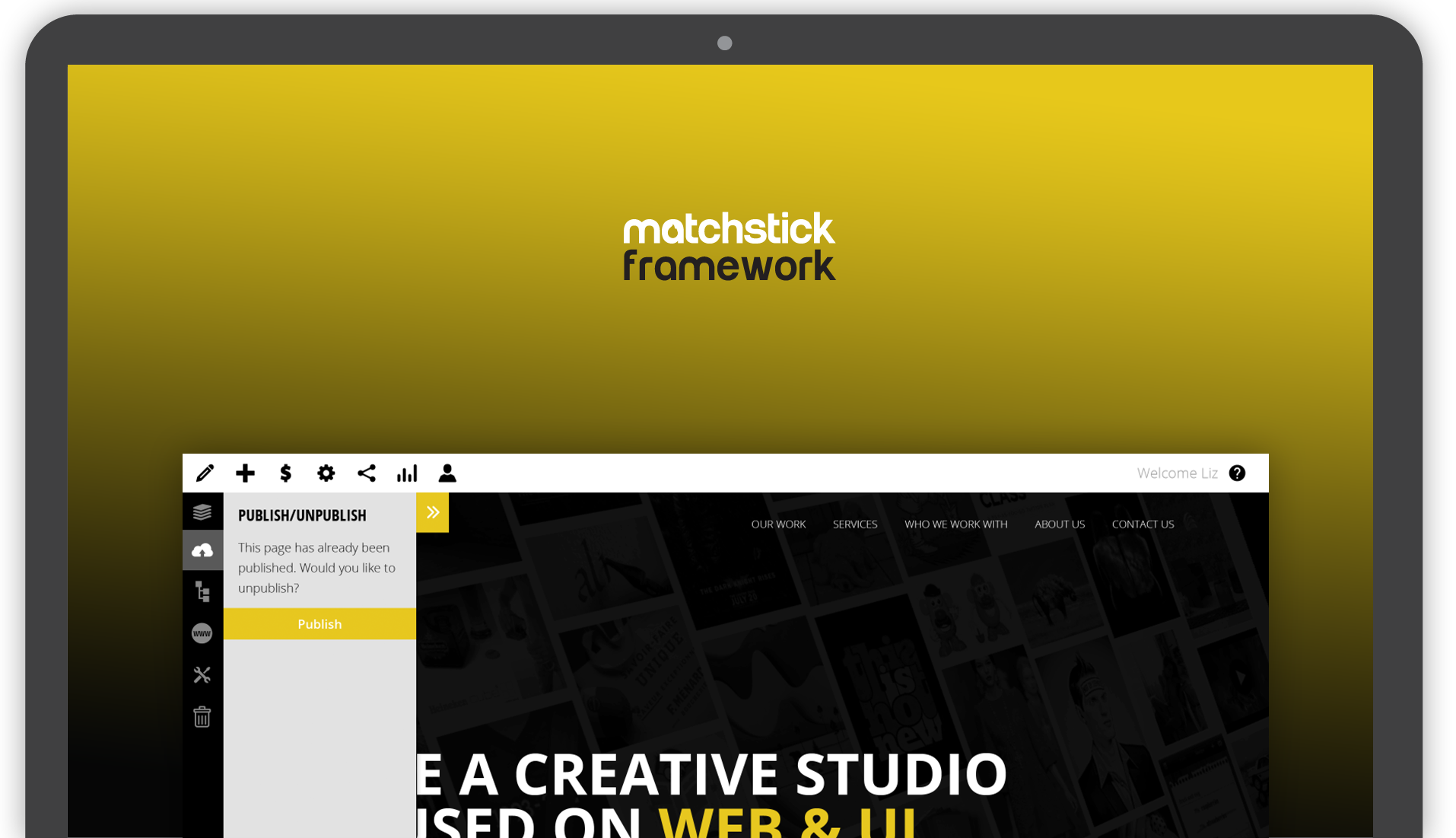 Jordan Carmon |
01.05.16 |
4 MIN READ
Jordan Carmon |
01.05.16 |
4 MIN READ Why We Created The Matchstick Framework

The year is now 2016. We have electric cars, drones that can drop your purchases on your front lawn, even reusable rockets. Yet most websites and online stores are running on platforms and technology that are 10+ years old. If you've been creating websites or have had a website over the past decade you've likely heard of Wordpress (initial release in 2003), Joomla (2005), MODX (2004), Textpattern (2003), Drupal (2001), and the list goes on. These examples run a massive amount of sites on the internet with Wordpress alone boasting that it runs 25% of the web. While it's important to note that all of these systems have had regular updates over the years to add more and more functionality, the issue is that the basic design principles are still rooted in what was available in the early 2000s. It's a bit like having your cell phone from 2003, but instead of getting a new one every few years, you just attach new things to it with duct tape and call it good. We would also be remiss if we didn't mention that Wordpress.com (different from Wordpress as a CMS, and one of the most popular platforms for personal blogging) has recently completely re-engineered their approach to the blogging world, but has yet to announce when those changes might take place for the rest of the web.
Truthfully, it's highly likely that most of these companies are working feverishly to update their technologies for a more modern time. So, we expect that this will become a non-issue at some point in the future. Hopefully. Until that time comes, however, we wanted to do our part to make the web as modern and beautiful as possible. Here are the two major reasons why we created the Matchstick Framework.
The first came from new or potential clients expressing frustration when it comes to the difficulties of updating their sites. Some update infrequently and thus forget how to use their CMS back end and where to go to update a particular piece of content. Others that update frequently complain about the time sink that goes into updating. They don't like having to navigate the back end of a CMS, make changes, click update, and then flip back and forth from the site's front end to make sure everything looks correct. It can be especially frustrating when a seemingly simple content change accidentally breaks the entire site. This happens often with low price theme and plugin "developers" who inundate client websites with a concoction of poorly written, poorly maintained third-party code. If you're a business owner, you should have the luxury of spending more time on your business and less time worrying about how long it will take to update your website. A site should be a tool to help your business grow and not a point of stress.
The second reason is a selfish one on our part. Being creative people we spend hours upon hours ensuring that what we deliver to our clients is the best possible experience for their project, their customers, and their potential customers. So, you can imagine our disappointment when we launch a shiny new website running on Wordpress that a client can then install a plugin on that completely wrecks the design. Whether it be plugins, changing font colors and sizes, or uploading images that are way too small, it's pretty easy to muck up a great design if you don't know what you're doing (or if you know just enough to be dangerous). One of the reasons why we do what we do is to help make the web more beautiful and more user friendly. Each site or application we create is painstakingly produced. Each font family, size, and color is specifically chosen. And each line of code is properly balanced to ensure accessibility, usability, and speed.
So, with those two main ideas in mind, we created the Matchstick Framework. It allows us to create a great looking website with just the right amount of freedom for the client to change their content directly from the front end, without the need to remember how to do anything. The idea is you sign in and then browse your website normally. Once you come across a piece of content you wish you change, simply click on it, change it, and save it. This provides instant feedback for how something looks. We're also able to "lock in" specific styles that are needed for a consistent looking experience. And, with blogging and e-commerce solutions built in, the framework can handle just about any need.
For more information, we've created a short video highlighting the framework's core features as well as a dedicated features page.
Truthfully, it's highly likely that most of these companies are working feverishly to update their technologies for a more modern time. So, we expect that this will become a non-issue at some point in the future. Hopefully. Until that time comes, however, we wanted to do our part to make the web as modern and beautiful as possible. Here are the two major reasons why we created the Matchstick Framework.
Client Frustrations
The first came from new or potential clients expressing frustration when it comes to the difficulties of updating their sites. Some update infrequently and thus forget how to use their CMS back end and where to go to update a particular piece of content. Others that update frequently complain about the time sink that goes into updating. They don't like having to navigate the back end of a CMS, make changes, click update, and then flip back and forth from the site's front end to make sure everything looks correct. It can be especially frustrating when a seemingly simple content change accidentally breaks the entire site. This happens often with low price theme and plugin "developers" who inundate client websites with a concoction of poorly written, poorly maintained third-party code. If you're a business owner, you should have the luxury of spending more time on your business and less time worrying about how long it will take to update your website. A site should be a tool to help your business grow and not a point of stress.
Our Frustrations
The second reason is a selfish one on our part. Being creative people we spend hours upon hours ensuring that what we deliver to our clients is the best possible experience for their project, their customers, and their potential customers. So, you can imagine our disappointment when we launch a shiny new website running on Wordpress that a client can then install a plugin on that completely wrecks the design. Whether it be plugins, changing font colors and sizes, or uploading images that are way too small, it's pretty easy to muck up a great design if you don't know what you're doing (or if you know just enough to be dangerous). One of the reasons why we do what we do is to help make the web more beautiful and more user friendly. Each site or application we create is painstakingly produced. Each font family, size, and color is specifically chosen. And each line of code is properly balanced to ensure accessibility, usability, and speed.
The Solution
So, with those two main ideas in mind, we created the Matchstick Framework. It allows us to create a great looking website with just the right amount of freedom for the client to change their content directly from the front end, without the need to remember how to do anything. The idea is you sign in and then browse your website normally. Once you come across a piece of content you wish you change, simply click on it, change it, and save it. This provides instant feedback for how something looks. We're also able to "lock in" specific styles that are needed for a consistent looking experience. And, with blogging and e-commerce solutions built in, the framework can handle just about any need.
For more information, we've created a short video highlighting the framework's core features as well as a dedicated features page.
What are your thoughts on the future of the web and how people should be able to manage the content on their sites? Know of anything we've missed? Let us know in the comments and thanks for reading!




